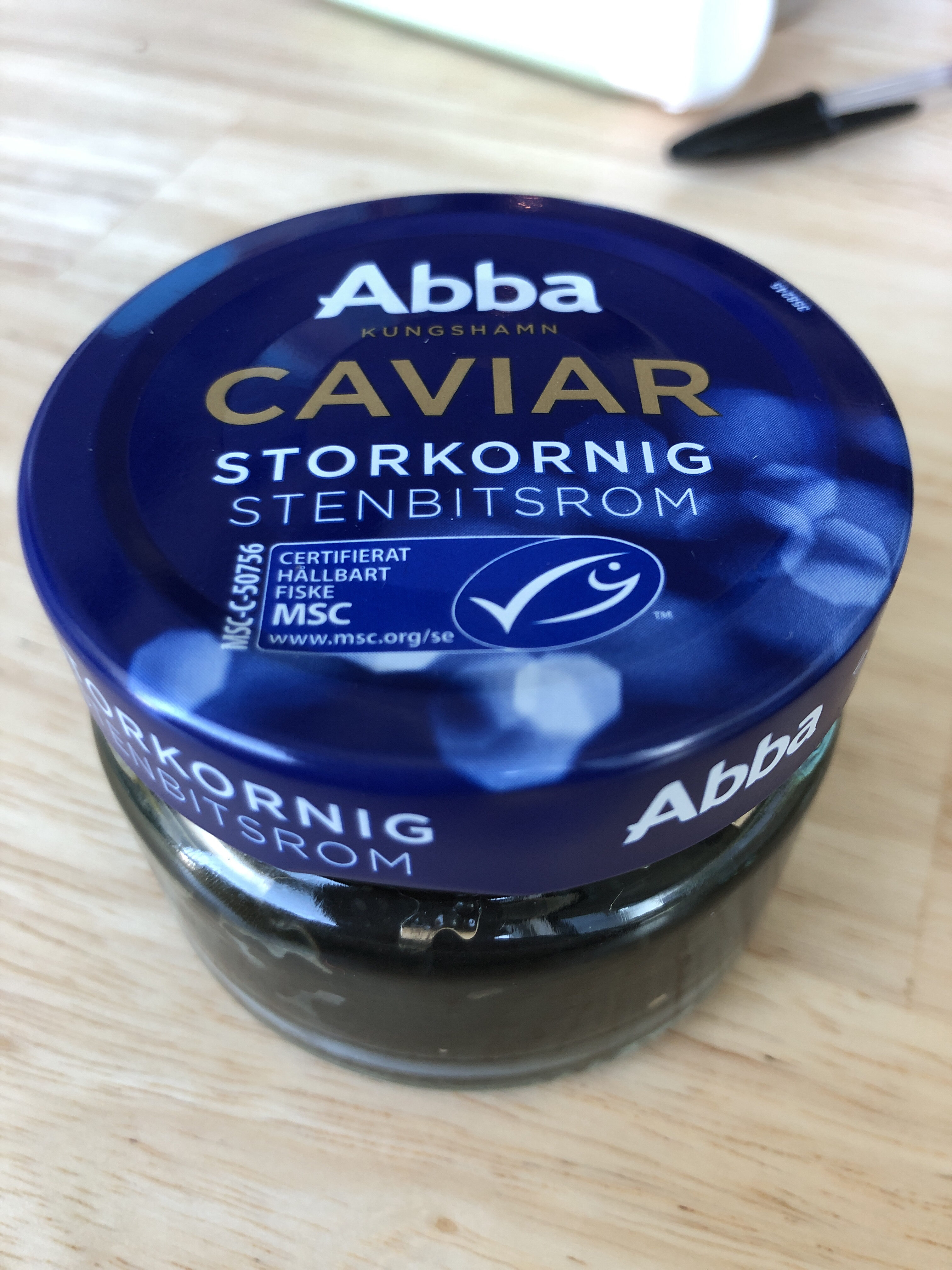Caviar - ABBA - 80 g
This product page is not complete. You can help to complete it by editing it and adding more data from the photos we have, or by taking more photos using the app for Android or iPhone/iPad. Thank you!
×
Barcode: 7311171007891 (EAN / EAN-13)
Quantity: 80 g
Brands: ABBA
Categories: Fish and meat and eggs
Labels, certifications, awards:
Sustainable, Sustainable fishery, Sustainable Seafood MSC
Traceability code: SE 900 EC
Countries where sold: Sweden
Matching with your preferences
Environment
Packaging
Transportation
Labels
Report a problem
Data sources
Product added on by openfoodfacts-contributors
Last edit of product page on by october-food-facts.
Product page also edited by danis1597, elizabethlima, foodless, roboto-app.
If the data is incomplete or incorrect, you can complete or correct it by editing this page.







